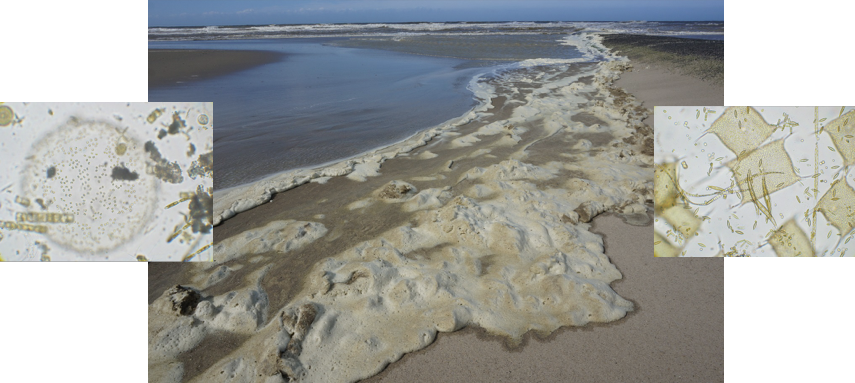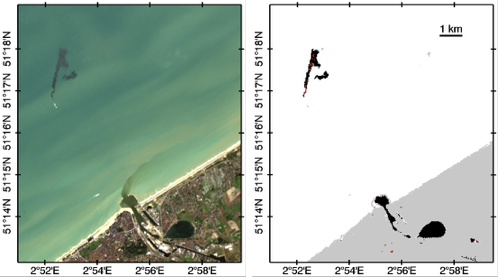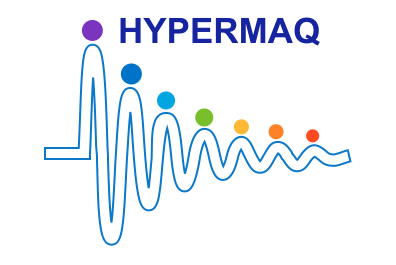The HYPERMAQ Project
Project Summary
Algorithms for remote sensing of suspended particulate matter and chlorophyll concentration are quite mature and applications relating to coastal sediment transport and environmental monitoring are routinely using satellite data. The challenge for researchers is now to estimate more than just concentration. Sediment transport users want spatial and temporal information on particle size and composition. Marine biologists and water quality managers want information on phytoplankton and benthic community composition, which is particularly difficult to obtain from remote sensing in turbid waters. The advent of spaceborne hyperspectral instruments offers the potential to yield more information on aquatic particles, both algal and non-algal.
In the HYPERMAQ project, algorithms will be developed for hyperspectral sensors to retrieve information on particle size and type, and, where possible, species of micro- and macro-algae.
Fieldwork to calibrate and validate these algorithms will be made in Belgian coastal and inland waters with intensive measurements of micro- and macro-algae and non-algal particles. Continuous measurements will also be made for satellite product validation, supported by the design of azimuthally rotating hyperspectral spectroradiometer systems deployed on platforms and buoys.
International partners from Argentina and China and France will contribute expertise by participating in Belgian fieldwork and hosting fieldwork in their own regions and by supplying/testing algorithms from/to their own regions to assess generality and any need for regional calibration.
Micro-algae

Macro-algae

Non-algae particles

